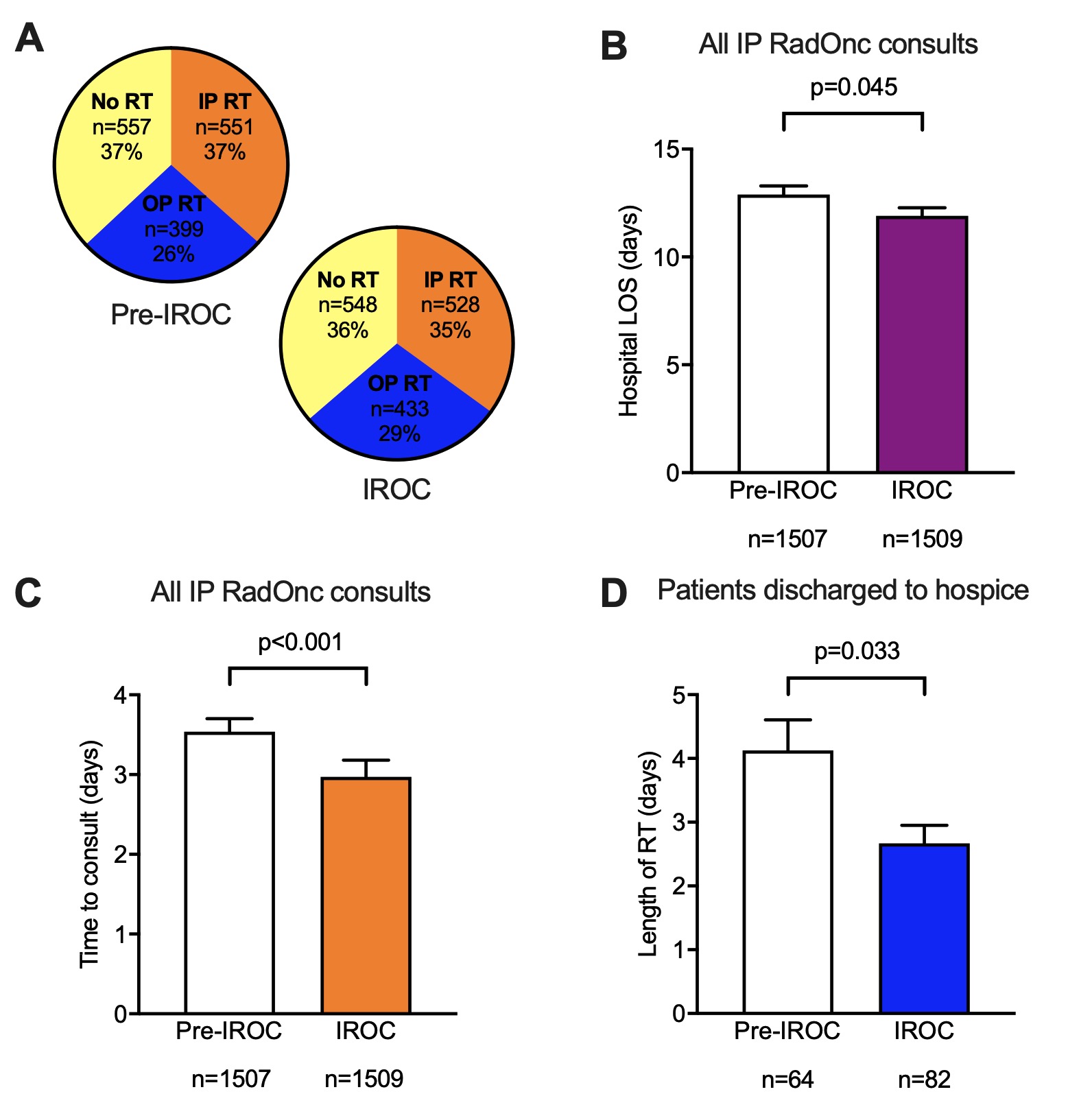An inpatient radiation oncology consult service is associated with shorter hospital length of stay
MO-0718
Abstract
An inpatient radiation oncology consult service is associated with shorter hospital length of stay
Authors: Morgan Freret1, Divya Yerramilli1, Oren Cahlon1, Simon Powell1, Jonathan Yang1, Sean McBride1, Daniel Gomez1, Amy Xu1
1Memorial Sloan Kettering Cancer Center, Radiation Oncology, New York, USA
Show Affiliations
Hide Affiliations
Purpose or Objective
Radiation therapy has an expanding role in the management of patients with advanced cancers, including in the palliative and oligometastatic settings. We previously described an inpatient radiation oncology consult (IROC) service created to deliver rapid, specialized metastatic cancer care to hospitalized patients. Here we report an 18-month update on IROC patient outcomes to test the hypothesis that IROC decreased hospital length of stay (LOS) and led to more prognosis-appropriate care, including during the first peak of the COVID-19 pandemic.
Material and Methods
The IROC service started in January 2020 and comprises faculty, advanced practice providers, nurses and resident trainees. Faculty are specialists in palliative and metastatic cancer care with certification in ablative radiation techniques. We compared inpatient radiation oncology consults placed from January to December 2019 (pre-IROC, N = 1,507) to those placed from June 2020 to June 2021 (IROC, N = 1,509). In a separate analysis, we examined consults during a non-overlapping period from March to June 2020 (N = 302) to assess changes in IROC practice patterns related to the peak of the COVID-19 pandemic in New York City. Statistical significance was assessed using the Mann-Whitney test.
Results
Hospital LOS decreased among all inpatient radiation oncology consult patients after implementation of IROC (N = 1,509 patients) by an average of 1.0 day compared to patients treated prior to IROC (N = 1,507 patients; P = 0.045). With IROC, consults were staffed an average of 0.6 days sooner (P < 0.001). Death within 60 days of inpatient RT decreased under IROC (35.4%, N = 187/528 patients) compared to prior (43.7%, N =241/551 patients, P = 0.005). Among patients discharged to hospice, inpatient treatment duration decreased after IROC (median 4 vs. 2 days, pre-IROC (N = 64 patients) vs. IROC (N = 82 patients), respectively, P = 0.033). The IROC service received consults for 21 patients infected with SARS-CoV-2, and 17 patients had active COVID-19 during treatment. Notably, hospital LOS for patients receiving inpatient RT under IROC was significantly shorter during the COVID-19 peak (median LOS 9 days, P < 0.001), when time to treatment decreased by an average of 2.5 days (P = 0.004) and treatment length decreased by 1.9 days (P < 0.001) compared to the pre-IROC period.
Conclusion
A dedicated inpatient radiation oncology consult (IROC) service was associated reduced hospital LOS, faster care delivery, and more prognosis-appropriate care. It enabled rapid implementation of emergency RT guidelines, including abbreviated treatment durations, during the first COVID-19 peak in a pandemic hotspot.